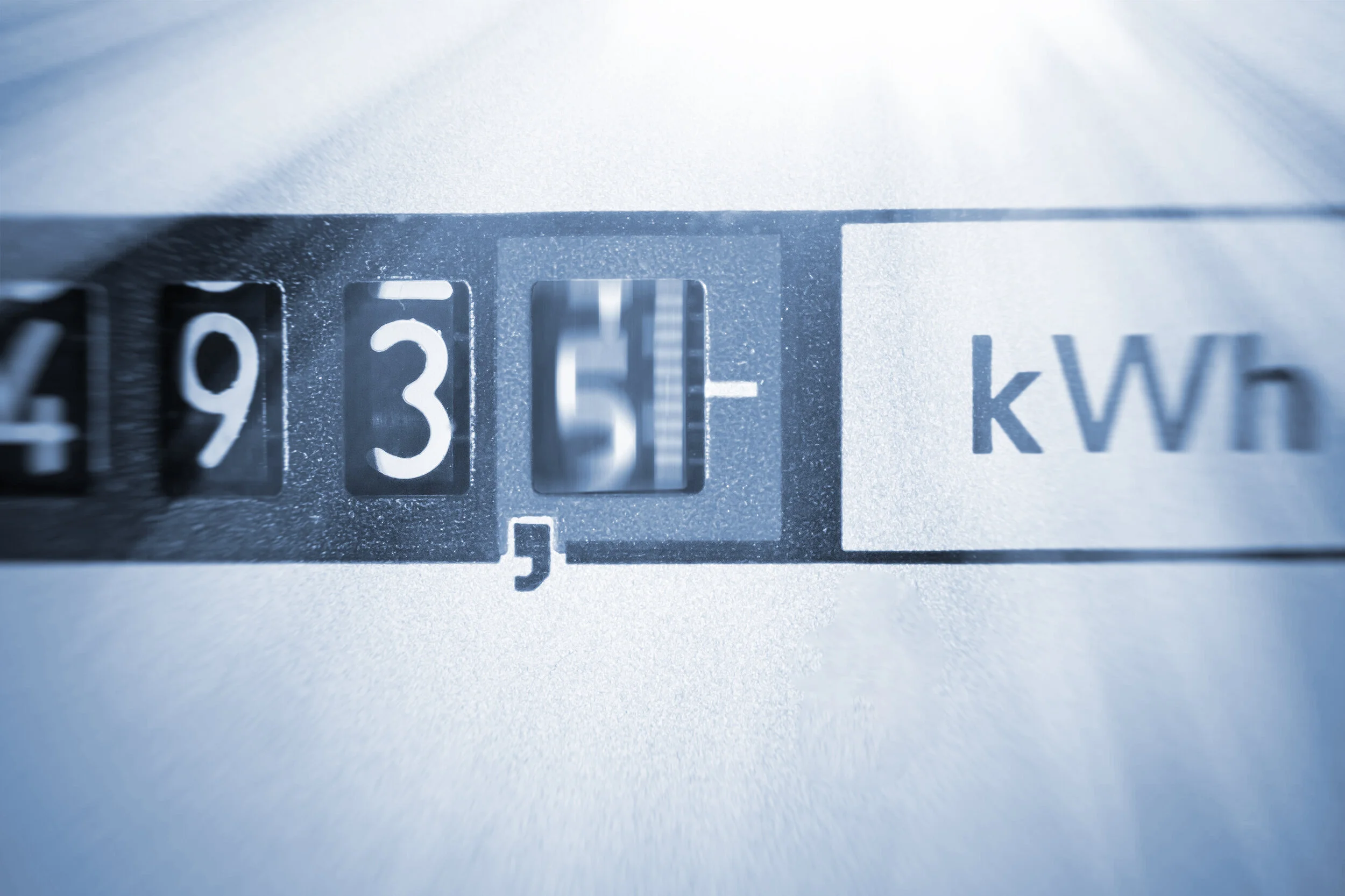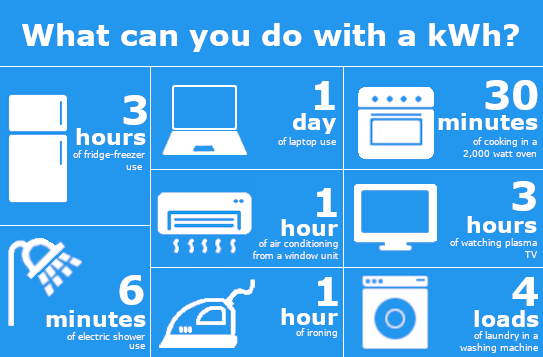What Is a kWh Anyway?
The average consumer notices their power consumption two times: when their lights go out and when they are paying their bill. The rest of the time, electric customers generally do not think about the role electricity plays in their day-to-day life or just how much electricity they use on any given day.
Part of the reason that power consumption is not thought about much is that it can be difficult to conceptualize, especially given some of the unique terminology. To help understand power consumption, the following infographics provide a comparative analysis of electricity use.
Home power consumption
Electric customers are charged for energy consumption by kilowatt-hour (kWh), which is not an every-day unit of measurement to Americans. Many consumers think of the kWh as a unit of currency: one kWh of electricity may cost 9 cents in off-peak hours, 13 cents in mid-peak usage, and 18 cents during peak use.
Put simply, a kilowatt-hour is equal to the amount of energy it takes to run a 1,000-watt appliance for 1 hour.
1,000 watts x 1 hour = 1,000 watt-hours = 1 kWh
Likewise, the same kilowatt-hour can power a 100-watt lightbulb for 10 hours.
100 watts x 10 hours = 1,000 watt-hours = 1 kWh
According to the US Energy Information Administration (EIA), the average American home uses 10,649 kWh of electricity per year, or about 29 kWh per day. Of this power consumption, EnergyStar and The Department of Energy estimate that the 5 largest energy-use categories are air conditioning and heating (46%), water heating (14%), appliances (13%), lighting (9%), and TV and media equipment (4%).
This gives us an idea of how many kWh we are using, but what exactly can one kWh do? Because the devices in our homes all have different power requirements, how far we can stretch a single kWh varies across the board.
The following graphic gives several examples of what a single kWh of electricity can power:
Corporate power consumption
So far we have been reviewing home use, but how does this compare to corporate energy consumption? The EIA also performed a study on energy-intensity by industry and created a chart listing the average kWh per square foot. Of the industries examined, the following graphic displays some typical building-types for context. Fast food restaurants and convenience stores are particularly power-hungry offenders, with libraries and office buildings closer to the average of 14.6 kWh per square foot.
Collecting the data
Utilities today collect massive amounts of data, including usage data from smart meters and data from other sensors throughout the grid. Unfortunately, they do not always have the means to analyze the data and turn it into actionable business intelligence. Such analysis can benefit both operational efficiency and reliability for customers. New technologies from smart meters to distributed energy resources are constantly evolving, and with them, the data requirements of utilities are reaching new levels of complexity.
Lucasys Is Helping Utilities Make Sense of Data
As US utilities continually expand their operations and data-gathering capabilities, Lucasys is here to track the data simply and effectively. Our knowledgeable team of consultants has the experience to organize and standardize tax, accounting, and forecasting systems to adapt for the latest regulatory rulings, and our toolset makes it simple to address the latest data issues impacting the utility industry. To learn more about how Lucasys can help visit https://www.lucasys.com/solutions.




